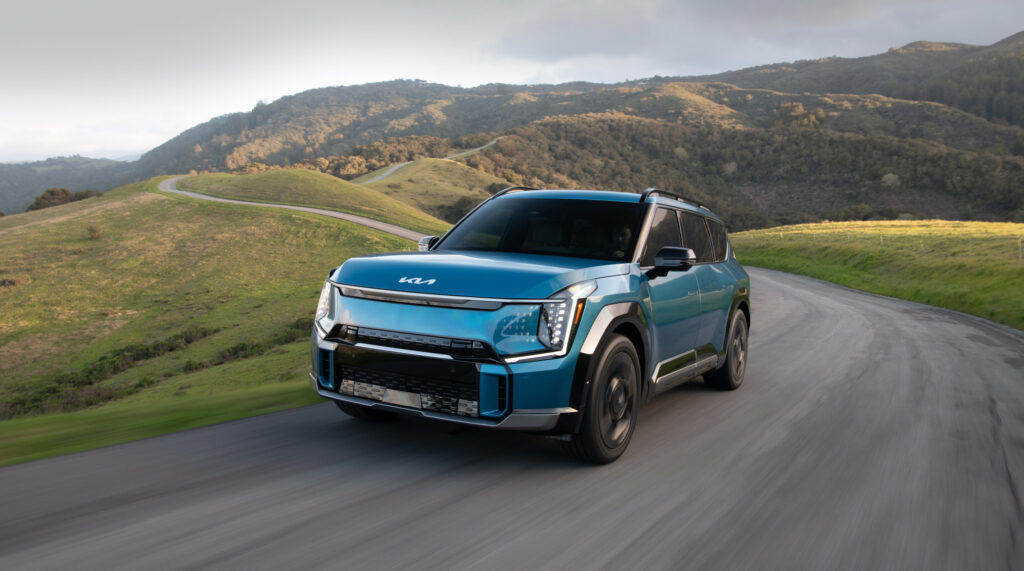In the world of commercial auto insurance, one of the most frequently asked questions is: How many business vehicles constitute a fleet?
While the specific number varies based on the insurance broker and regional regulations, in general, a fleet is considered to be anywhere from two to five or more vehicles owned by a single entity or business.
This guide will offer insights into the significance of commercial fleet insurance and the factors that influence the definition of a fleet. Whether you’re a small business with a couple of economy vehicles or a large corporation with a number of different vehicle types, understanding these criteria is crucial for optimal liability insurance coverage and protection.
Defining a ‘Fleet’ in Insurance Terms
The term ‘fleet’ might seem straightforward, but when it comes to insurance, its definition can vary due to different historical standards and the evolving policies of insurance providers. Let’s delve into what traditionally constitutes a fleet and how modern interpretations now differ.
The Traditional Definition of a Fleet of Vehicles:
Historically, a fleet was a group of five or more vehicles owned by a single entity or business.
This benchmark was set to differentiate between individual car owners and businesses that operated multiple vehicles for commercial purposes. The primary idea was to offer businesses a streamlined auto insurance policy, consolidating a number of vehicles under a single policy to simplify fleet management and save money on insurance rates.
Modern Variations on the Definition of a Fleet:
As the insurance industry has evolved, so have the definitions and criteria for what constitutes a fleet. Today, some insurance agents might consider as few as two or three vehicles to be a fleet, especially if they’re used for business purposes. This shift recognizes the diverse needs of modern businesses, from small startups operating a couple of delivery vans to large corporations with extensive vehicle assets.
It’s essential for businesses to consult with individual insurance companies, as fleet criteria can vary widely based on the company’s policies, the specific services they offer, and regional regulations.
In essence, while there’s a traditional benchmark for defining a fleet, the modern landscape of fleet vehicle insurance is more flexible, accommodating the varied needs of today’s businesses.
Read our article on fleet insurance costs if you are concerned about what it may cost you to insure your EV fleet.
Benefits of Fleet Insurance for Various Fleet Sizes
Fleet insurance is designed to cater to businesses of all sizes, ensuring that every vehicle, regardless of the fleet’s scale, is adequately covered. The advantages of fleet insurance coverage can be particularly pronounced depending on the size of the fleet. Let’s explore the benefits tailored to different fleet sizes.
The Benefits of Fleet Insurance for Small Fleets:
For businesses operating with a minimal number of vehicles, fleet insurance can be a game-changer. Here are some of the advantages:
- Consolidated Coverage: Even with just two or three vehicles, managing individual insurance policies can be a hassle. Fleet insurance consolidates these into a single policy, simplifying administration and management tasks.
- Cost Efficiency: By opting for fleet insurance, small businesses might be eligible for discounts or lower premiums that wouldn’t be available with separate policies. This can lead to significant savings in the long run.
- Flexibility: Small businesses often experience dynamic operational changes. Fleet insurance offers the adaptability to adjust liability coverage as the business grows without the need for an entirely new insurance plan.
The Benefits of Fleet Insurance for Medium to Large Fleets:
As the number of vehicles in a fleet increases, the benefits of commercial vehicle insurance become even more pronounced.
- Volume Discounts: Insurance providers often offer discounts for larger fleets, recognizing the volume of business. This can lead to substantial reductions in the cost of fleet insurance on a per-vehicle basis.
- Streamlined Administration: With a larger number of company vehicles, tracking individual policies, renewal dates, and insurance claims can be a logistical nightmare. Fleet insurance offers a unified platform, making managing all types of vehicles more straightforward and efficient.
- Risk Management: Larger fleets often come with increased risks, from accidents to thefts to vandalism. Fleet insurance providers typically offer risk assessment and management tools, helping businesses identify potential issues and implement preventive measures. As you assess your own risk, take into account your drivers’ claims history, driving records, and general liability. Business insurance and collision coverage highly depend on the strength of the drivers.
Whether a business operates a compact fleet or boasts an extensive lineup of vehicles, fleet insurance offers tailored coverage. By understanding these advantages, businesses can make informed decisions, ensuring they reap the full rewards of their fleet insurance policies.
How Insurance Providers and Regional Regulations Affect the Definition of a Fleet
While businesses might have a general idea of the definition of a fleet, the specifics will be shaped by both the policies of insurance providers and regional regulations. Let’s delve deeper into these influencing factors.
How Insurance Provider Policies Affect The Definition of a Fleet of Vehicles:
Different insurance companies often have their own set of criteria when defining a fleet. These criteria are shaped by:
- The Insurance Provider’s Business Strategy: Some providers might target larger businesses. They will then set a higher minimum number of vehicles for fleet insurance. Others might cater to small businesses and recognize even two company vehicles as a fleet.
- How an Insurance Company Assesses Risk: Insurance is fundamentally about assessing and managing risk. Providers might adjust their fleet size criteria based on their risk models, considering factors like average claim amounts, frequency of claims, and overall profitability.
- The Overall Competitive Landscape: In a bid to stand out in a competitive market, some providers might offer more flexible fleet size criteria as a unique selling point, aiming to attract a broader range of businesses.
How Regional Variations Affect Fleet Insurance Policies:
The location of a business and the specific regulations of that region can also play a pivotal role in defining fleet size.
- Local Regulations: Some regions or counties might have specific definitions of what constitutes a commercial fleet, depending on transportation laws, business regulations, and even tax codes. These regulations can directly impact fleet size criteria and the extent to which fleet insurance covers property damage and the like.
- Market Dynamics: In areas with a high concentration of small businesses or startups, insurance providers might be more inclined to offer fleet insurance for a smaller number of vehicles, recognizing local business needs.
- Economic Factors: In regions with economic challenges or higher risks (like high theft rates), insurance providers might adjust their fleet size criteria, balancing potential risks with business opportunities.
Making the Right Commercial Fleet Insurance Choice for Your Business
Selecting the appropriate fleet insurance is more than just understanding definitions and criteria; it’s about aligning your unique business needs and goals with the right fleet insurance coverage to make sure you get there. Let’s explore the key considerations businesses should keep in mind when making this crucial decision.
Key Considerations for Businesses when Choosing a Fleet Insurance Policy
- The Number of Vehicles in Your Fleet: Take stock of the current number of company vehicles in operation. Does this number align with the fleet criteria of potential insurance providers?
- Operational Dynamics: Consider the roles these vehicles play in your business. Are they frequently on the road, facing higher risks of physical damage, or are they used rather sporadically? Understanding these dynamics can help determine the type of insurance required.
- Cost-Benefit Analysis: Weigh the costs of fleet insurance against its benefits. For some businesses, especially those with fewer vehicles, it might be more cost-effective to get individual car insurance for each vehicle. However, the administrative ease and potential discounts of fleet insurance might tilt the scales in its favor for others.
Keep in Mind Your Business Goals for Future Growth:
Businesses are not static entities; they evolve, grow, and adapt. When considering fleet insurance, it’s crucial to factor in your future business goals:
- Expansion Plans: Are you planning to expand your fleet in the near future? It might be wise to opt for an insurance provider with flexible fleet size criteria, ensuring seamless additions to the fleet policy as new vehicles are acquired.
- Operational Shifts: As businesses grow, their operational systems and policies will change. A company that initially used vehicles sporadically might transition to more frequent usage. This shift can influence insurance needs, making it essential to choose a provider that offers adaptable policies.
- Financial Forecasting: Consider the financial implications of fleet expansion. How will adding more vehicles impact insurance premiums and deductibles? Are there potential volume discounts or tiered pricing structures that can offer savings as the fleet grows?
Making the right fleet insurance choice is a blend of understanding your current needs and anticipating future changes. By assessing the present operational landscape and factoring in growth goals, businesses can secure fleet insurance that offers both comprehensive coverage and financial efficiency.
Conclusion
The specific number of vehicles required for fleet insurance varies based on the provider and regional regulations, with some insurance brokers considering as few as two vehicles a fleet, while others may require five or more. It’s imperative for businesses to clarify this number with potential providers.
By understanding and meeting these fleet size criteria, business owners can ensure they are adequately covered and benefit from all the advantages commercial fleet insurance offers. Consult with insurance providers to receive a free quote and determine the best fit for your fleet size and operational needs.

